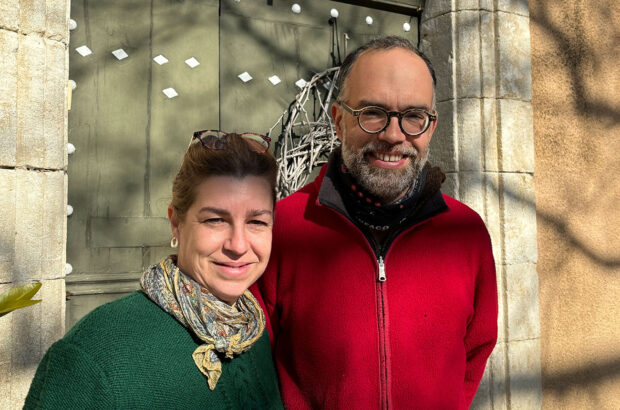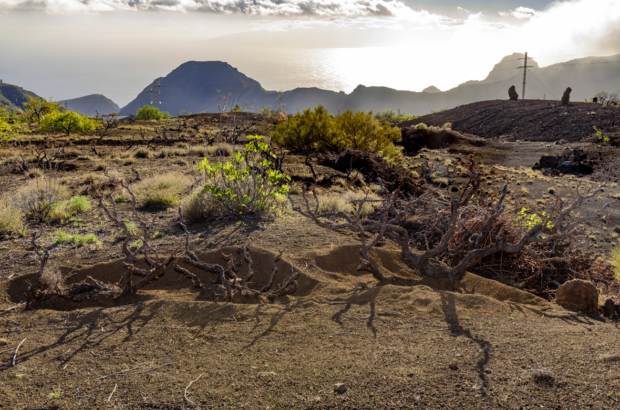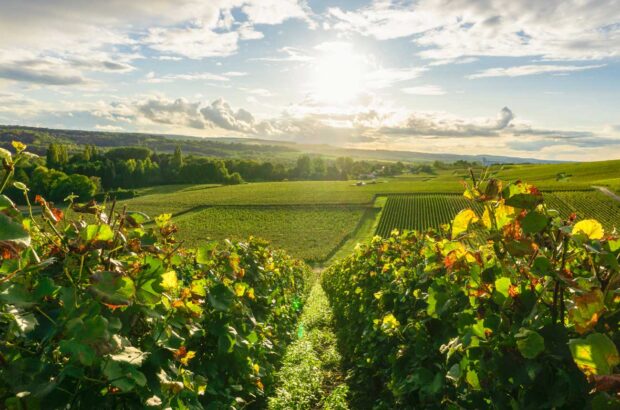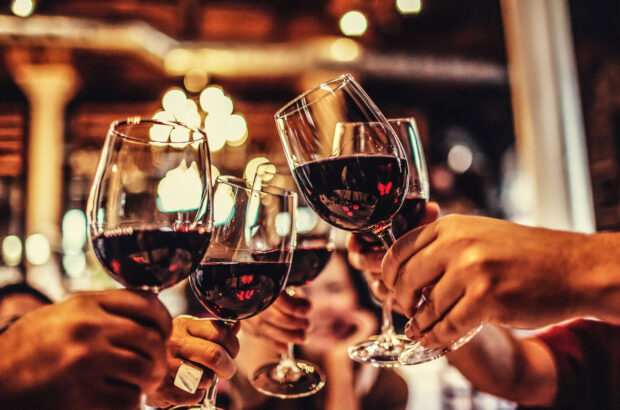An Eiffel Tower winery might not seem the obvious choice for Paris, but then the first floor of this landmark has seen its fair share of eccentric attractions over the last 130 years.
In 1948, an 85-year-old elephant climbed the 328 steps to promote a circus show. In 2018, the skeleton of a 150-million-year-old, nine-metre-long dinosaur went on display before being sold at auction for €2 million.
At various other times the platform, that sits 57m up the 300m tower above the Champ de Mars and the chic streets of Paris’ 7ième arrondissement, has hosted a bear, a troupe of horses, the hull of a ship and an ice rink.
That list has now been joined by a line of Demptos wine barrels and two stainless steel vats, all belonging to the pop-up winery that has been given pride of place on the Eiffel Tower’s first floor since October 2019.
It was due to stay in place until March 2020, but its popularity means that it will now almost certainly remain there until at least the summer.
Over the past four months, a sizeable slice of the six million visitors who make their way up the landmark each year have been able to watch Merlot grapes unloaded from crates, then see them carefully sorted by volunteers, tipped into vats, pressed and then racked into barrels that are carefully stacked alongside the famous iron frame.

In the winery.
Later this year, visitors should be able to watch the finished 2019 wine move from barrel into 2,000 bottles, all with panoramic views over Paris below – albeit vertigo sufferers might wish to forego the view and study the bottling line in more detail.
This is not winemaking for the faint-hearted.
La Winerie Parisienne was founded in 2015 by Julien Bengué and Adrien Pelissié, who were joined six months later by Julien Brustis.
The three partners, all in their early 30s with varying backgrounds in wine, technology and management, have orchestrated the launch of what is believed to be the first urban winery in Paris since the 1960s.
It is also the first since the 19th century to have planted its own vineyards in the region; vines sit 20 minutes outside the city on agricultural land around the Palace of Versailles.
By the end of this year, the team will have 23ha of vines, plus partnerships in place with a further six growers, all on the Plaine de Versailles, which will be converted from other forms of agriculture to plant vineyards.

Pouring grapes
‘We had to find a way to stand out as a start-up,’ Brustis tells me as we are climbing those same 328 steps up to the first-floor winery.
‘The idea of the company has always been to resurrect the wine history of Paris and so linking our name to iconic Parisian landmarks seemed an effective way to make an impact in a short space of time.’
They chose the rooftop bar of BHV Marais department store for the first winery pop-up in 2018 and sponsored Roland Garros tennis tournament in 2019; two places that Parisians are always happy to be seen.
The Eiffel Tower, in contrast, is almost never visited by Parisians themselves.
The risk was that it could place the Winerie Parisienne in tourist-only territory, along with the Eiffel Tower keyrings that are sold by lines of vendors on the far side of the security gates.
The opposite, in other words, of what a serious young wine company would want.

Sorting grapes
‘In fact that risk is one of the reasons that this has been so successful,’ says Pelissié, technical director of the project, and who has previously worked with Château Angélus in St-Emilion and Philippe Melka in Napa Valley, among others.
‘We created the pop-up in association with the Société d’Exploitation de la tour Eiffel [SETE, 99% owned by the city of Paris] and catering services company Sodexo,’ says Pelissié.
‘They could see the potential for promoting wines made in the region, for supporting local agriculture and gastronomy.
‘And they could also see that it could attract locals back to the Eiffel Tower, to give them an authentic reason to reclaim this space that is anchored in their own history and culture.’
The company’s main winery is located in a former print works in Montreuil, a suburb to the east of Paris.
The first four years saw the team draw on partnerships with 15 winemakers around France, selling 100,000 bottles across 15 labels to independent wine merchants and key restaurants across Paris, including those of the SETE.
The top cuvée is called Judgement of Paris as a nod to Steven Spurrier’s game-changing 1976 tasting.

The 2019 vintage will be the first from their own vineyard, on sale in September 2020, with setup costs partly paid for with through an oversubscribed crowdfunding campaign that raised €755,190 from 107 investors. The team had initially asked for €500,000.
‘We are not a typical urban winery because this is also an agricultural project,’ says Brustis.
‘In 2016, we had the opportunity to purchase a piece of land in a village called Davron – 27ha of a larger farm that had been lying fallow for the past 15 years because of poor clay-limestone soils that were not great for the cereals that are planted on the rest of the farm.
‘We planted 16ha at first, and our inaugural harvest was picked by our investors and friends, people who have followed the project since the beginning.
‘And was watched by 25,000 people who followed it via Facebook Live.’
So far plantings are concentrated on six varieties – Chenin Blanc, Chardonnay, Merlot, Pinot Noir, Cabernet Franc and Cabernet Sauvignon, along with a small range of rare grape varieties seen in the region in the 19th century.
Around 20% of overall production is being made on the Eiffel Tower and will be sold under the name La Chai de la Tour Eiffel, with the rest vinified in Montreuil.
The aim from now is to increasingly work only with vineyards in the Paris region. This includes the six partner estates also located on the Ile de France, set up in collaboration with the local Chamber of Agriculture.
Their own vineyards are farmed entirely organically and the first harvest is expected in 2022. Partner growers must avoid use of chemical herbicides be certified at HVE3 – the third rung of the government-backed sustainability initiative for agriculture in France.
‘Our timing has been good,’ says Brustis. ‘Warmer summers mean vineyards in the north of France are suddenly feasible, and we benefit from the locavore movement, keeping the supply chain as short as possible, sourcing locally and supporting local business.’

This this is how they originally started in Eiffel Tower. Brustis turned up at the downstairs ticket office with a case of wine samples to get onto the Jules Verne restaurant wine list.
Just as the staff was busy showing him the door, the beverage director happened to walk past, enjoyed the samples – and the story – and agreed to take them on as a supplier.
From there, the partnership grew. The mechanics of setting things up were challenging, to put it mildly.
All equipment had to fit in the Eiffel tower lift, and it is not exactly spacious.
‘The vats are literally built to within the nearest centimeter of the elevator dimensions,’ says Pelissié. ‘And the sorting line and wine press had to be taken apart and reassembled – as the bottling line will be later in the year.’
The location of the next pop-up for the 2020 vintage has not yet been disclosed.
‘Right now lots of people are making suggestions, but we have not made any decisions yet,’ they both say coyly – and I have a feeling not altogether truthfully.
‘We are concentrating on planting our partner vineyards, and just on getting this stage right before we decide where is next.’
They’ve certainly set themselves a high bar. There are plenty of other iconic spots in Paris, but they are going to have their work cut out to be able to equal this view.







